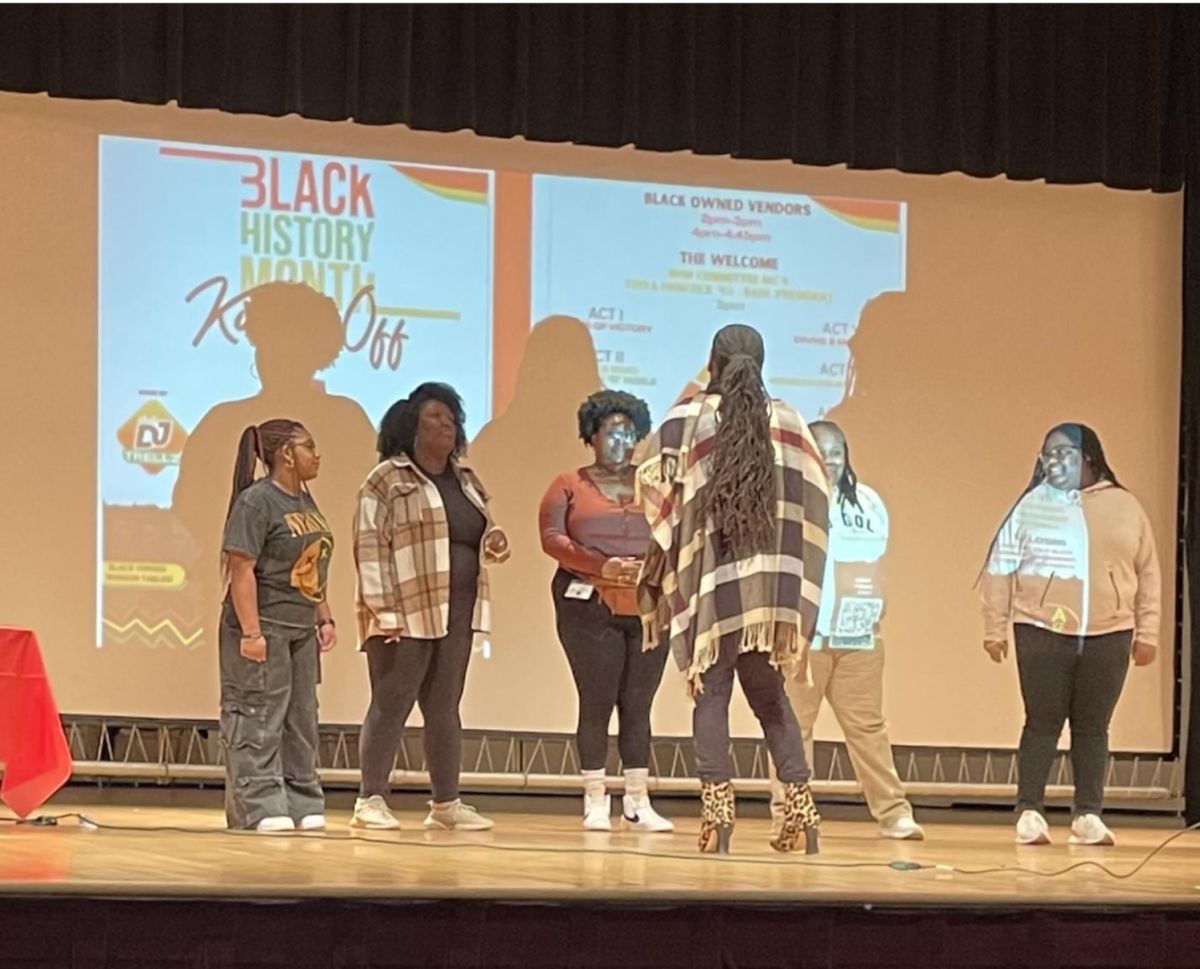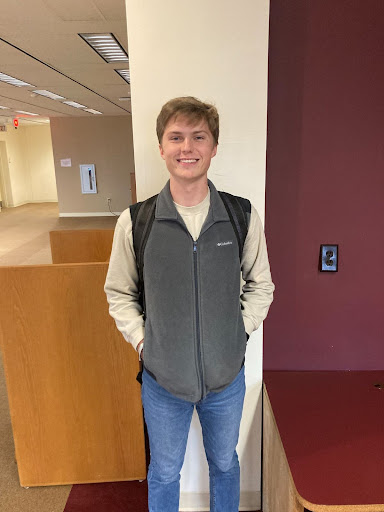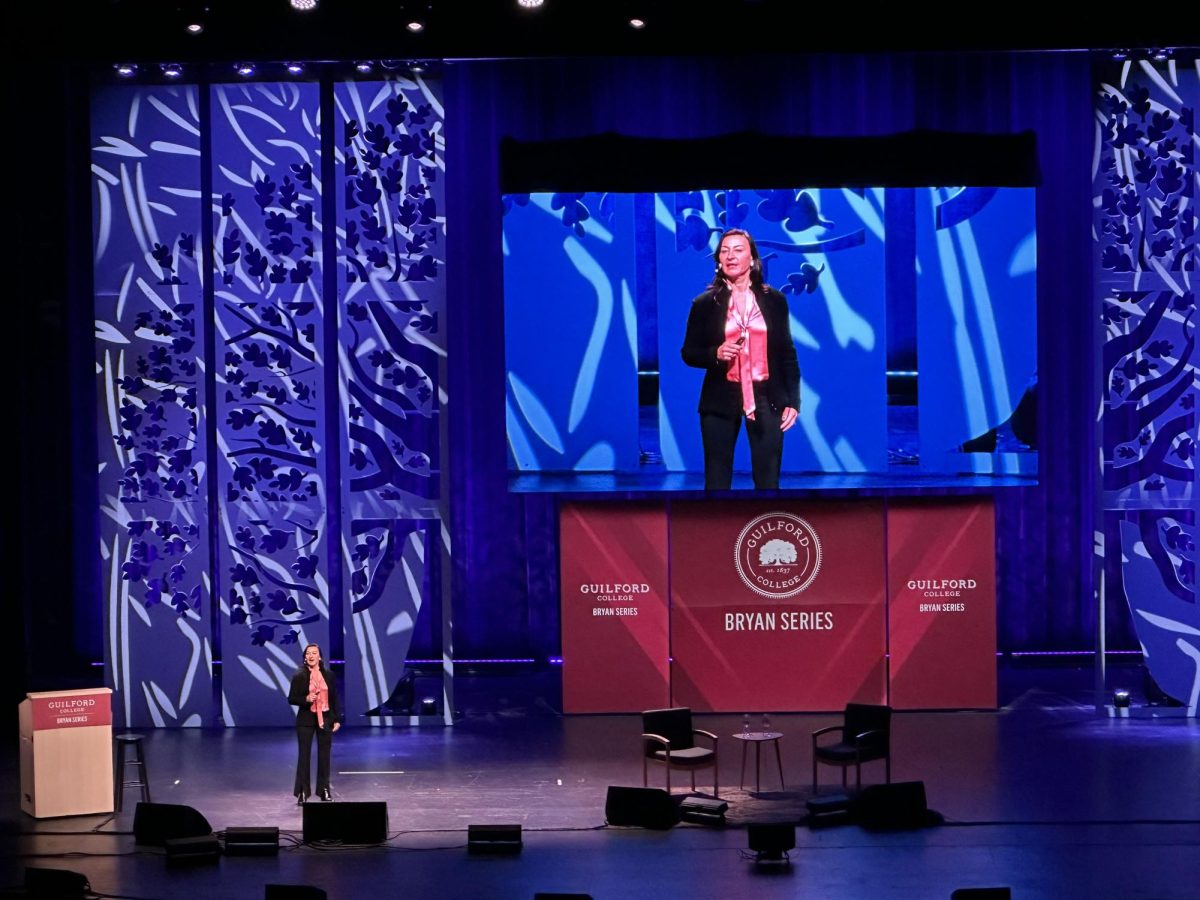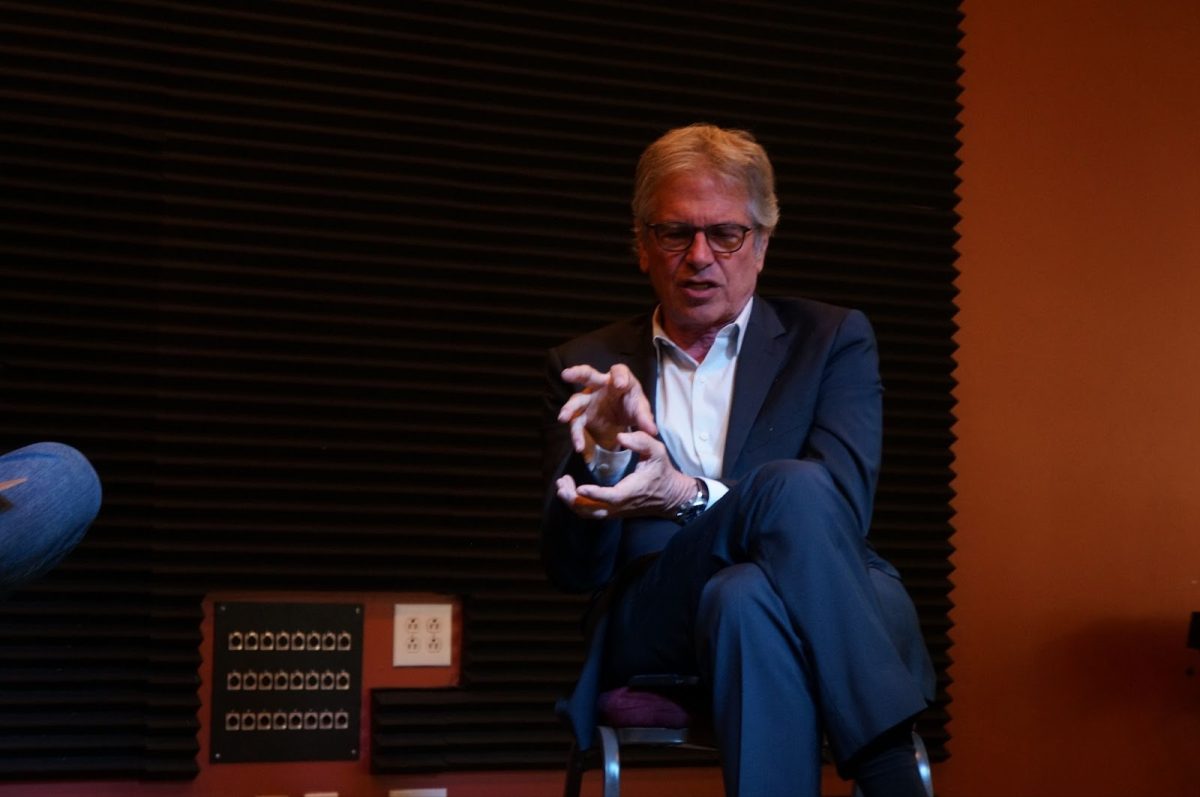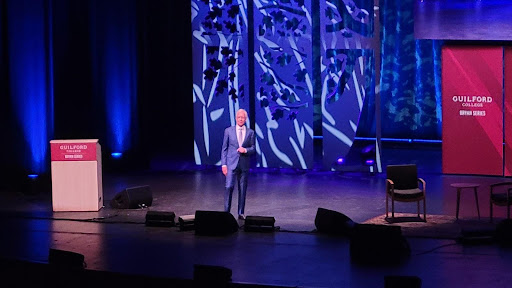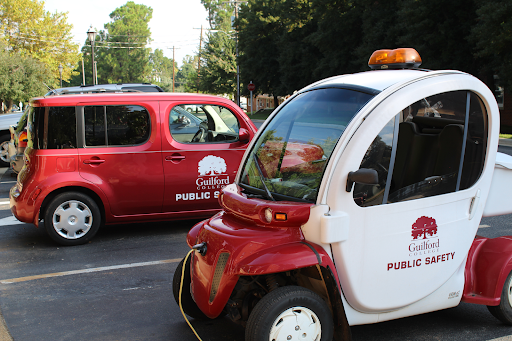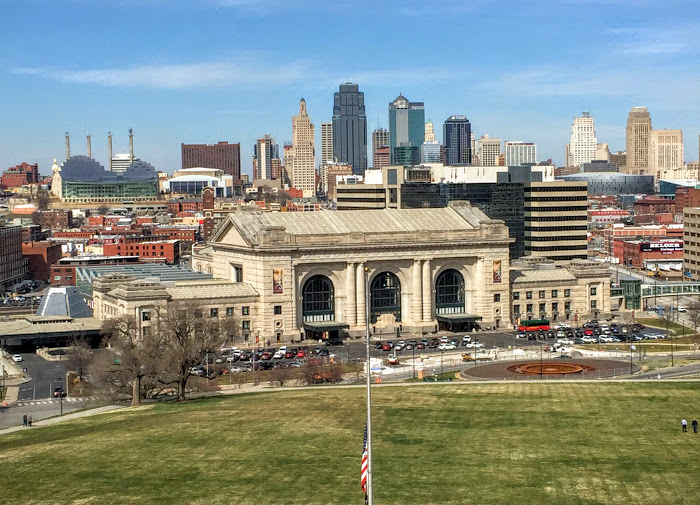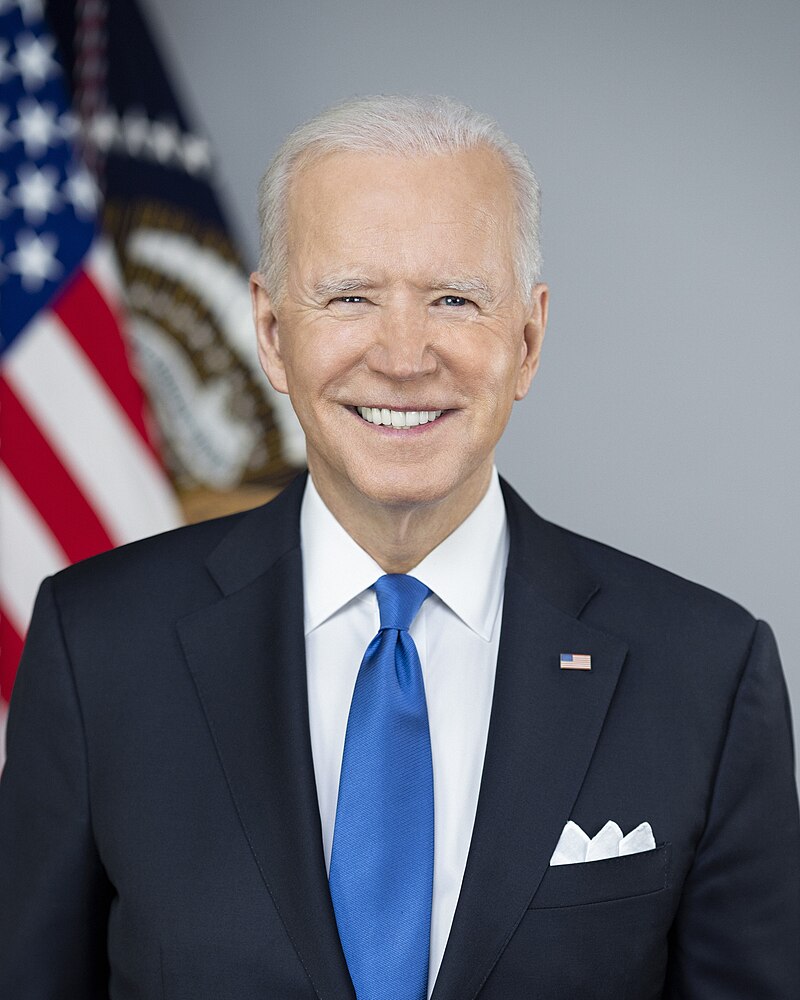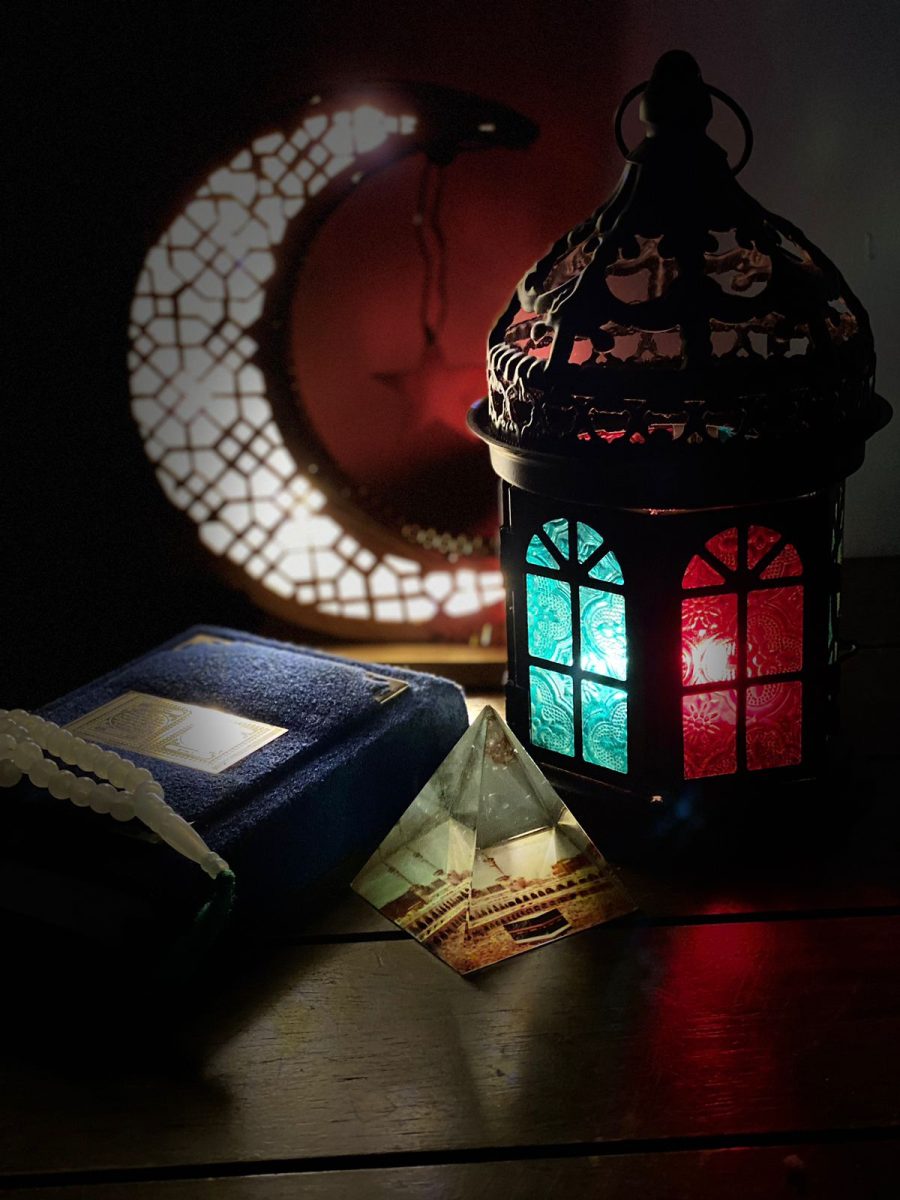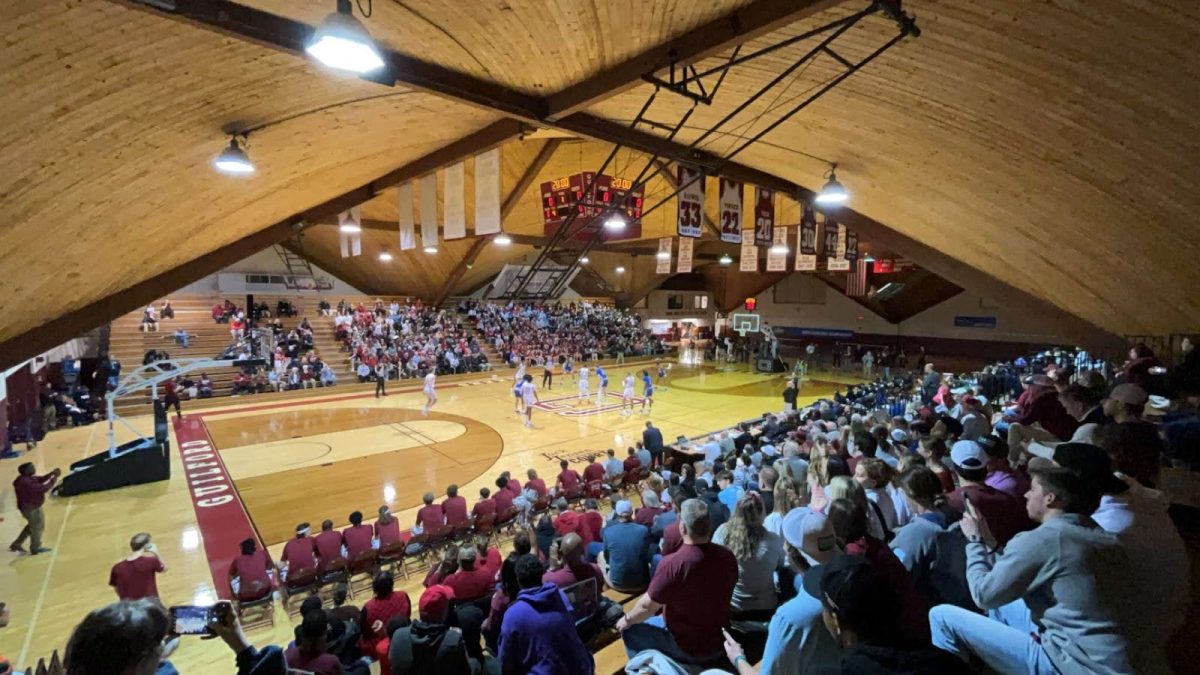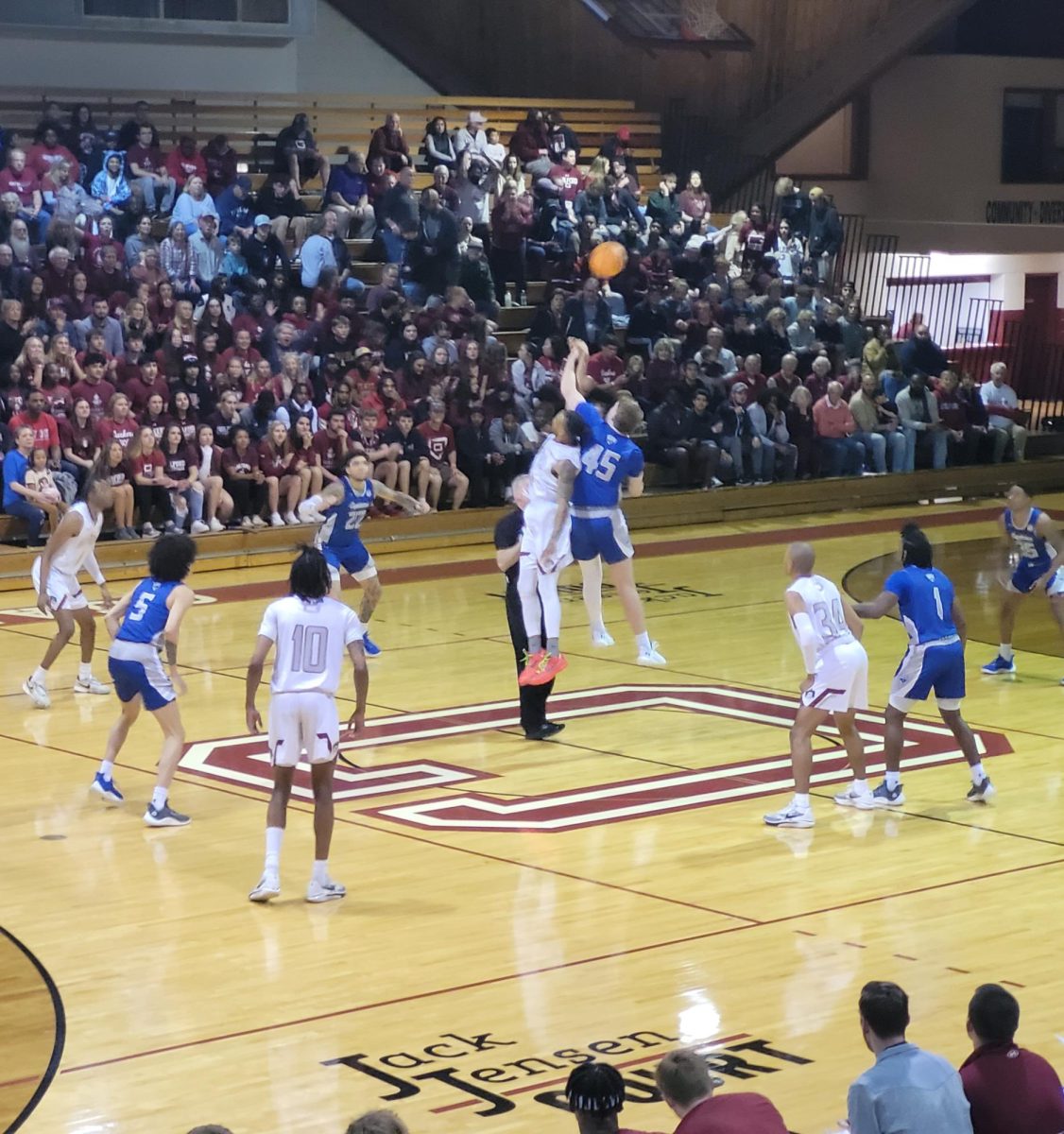By the time PBS “National Parks” documentary filmmaker Ken Burns walked out on stage on March 27 as the third speaker in the 2011-12 Bryan Series, the audience buzzed with a sense of something a lot more than just the sum of our parks.
President and Professor of Political Science Kent Chabotar introduced Burns by way of Burns’ Oct. 2003 appearance. Standing before a backdrop of the now-famous photo of Burns and some former first-years, Chabotar welcomed the alums who are making a homage to their hero, a documentary-in-progress named, “The Ken Burns Effect.”
After a sampling of Burns’ 2009 six-hour, 12-part miniseries, “National Parks: America’s Best Idea,” Burns thanked the Bryan Series and Guilford College for asking him back.
Launching into his own miniseries of a talk, Burns held the audience spellbound as he wrapped them around his storyteller’s finger, in a journey as verbally visual as it waspacked with personal anecdotes, calls to action and lyrical poetic passages.
“We get a lot of comments about our speakers’ deliveries and their content,” said Associate Vice President for Communications and Marketing Ty Buckner. “In the case of Ken Burns, what I’ve read so far is that his speech was almost ‘poetic.’ That’s a first. We have had authors and actors speak, but no one’s ever described a speech as poetic.”
Burns’ speech had a similar effect on new Associate Director of Communications and Marketing Dan Nonte.
“He’s an eloquent man, even offstage,” said Nonte. “I heard him speak extemporaneously afterward with the alums who are making the movie. He could have left at anytime, but he talked with them for a good hour.”
The National Parks project, 10 years in the making, was an idea “we kept bumping up against” according to Burns, while criss-crossing the country filming other projects.
Burns spoke of the tireless efforts of people who devoted their lives’ work to preserving sacred spaces and documenting those places.
Speaking of the parks’ transforming and restorative nature, Burns shared his own personal experience.
He said he felt he belonged to something that transcended time and space, a larger spiritual initiative, where “we were all hearing the same great symphony.”
Well, not all of us. Assistant Professor of History Damon Akins maintains that while Burns is a great filmmaker, students should be made aware that Burns is a storyteller and sometimes leaves out, whether intentionally or not, part of the bigger picture of historical accounts.
“I wish that there had been more of a conversation at Guilford around Ken Burns and his work, so that we could help our students think more critically about media in order to be more critical consumers of media,” said Akins. “By positioning one specific story as the story of the nation, Burns’ films marginalize those who don’t quite ‘fit.’
“For example: almost every national park in the United States was carved out of land taken from Native Americans, much of it still contested. Native peoples have complicated relationships to the national parks, which is well-covered in the existing historical literature, but in (Burns’) film, “The National Parks: America’s Best Idea,” Native Americans really only appear in the first episode when it describes the Ahwahnechee’s early possession of the Yosemite valley.
“By rendering native possession as only a thing of the past, it naturalizes U.S. theft of native land and renders recent and ongoing disputes over indigenous land claims (trivial).”
Nearing the end of his sweep through the National Parks, Burns revealed how a lost bittersweet memory of Shenandoah National Park cascaded back to him on his first trip to Yosemite. Burns then concluded:
“But the narrative of the parks is not just their spectacular scenery, or even the sagas of the complicated charismatic individuals who save these spaces,” said Burns. “It is also about who you see these sacred places with, whose hand we are holding at the rim of the Grand Canyon or in Shenandoah National Park.
“What are these ‘intimate transgressions’ (historian) William Cronon would say occur between generations as we distill the lives of the parks to our posterity?
“We are beset with discontinuity. We do quarrel, get sick and die. Rarely does the momentum of things permit repairs, or reconciliation.
“But I have found the places where the narratives of human lives and those of their brotherly rocks seem just as important as some inexpressible something. Something is retained.
“Repairs are made and we are all of us as (author) John Muir fervently wished us to be, ‘kindred spirits.’”

